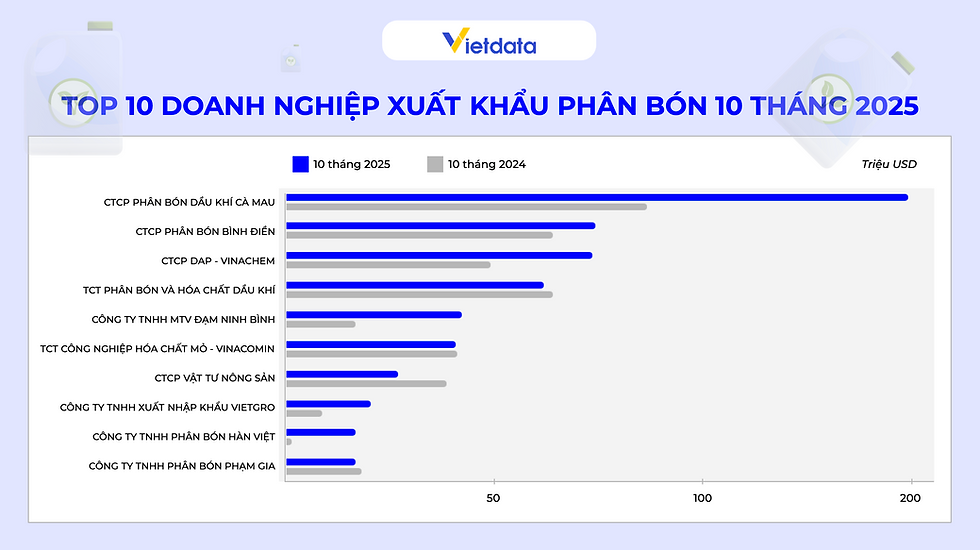Vietnam Fertilizer Sector – October 2025: Earnings Lose Momentum, with Clear Divergence Across Producers
- gamlthvietdata
- 27 minutes ago
- 2 min read
Overall Assessment of Sector Performance
Sector earnings began to decelerate from late Q3 as both sales volume and selling prices weakened simultaneously, while surging gas prices continued to pressure profit margins.
Domestic Market Conditions:
Fertilizer consumption remained subdued as large areas of rice and crop farmland — along with sowing activities across multiple northern and central provinces — suffered extensive damage following recent storms.
In October, subdued end-market demand resulted in lower production, down -1.8% YoY (urea -3.1% YoY; NPK -4% YoY).
Fertilizer demand over the next two months will likely continue to reflect the lingering impact of the storm cycle, as several farming regions are still restoring soil conditions and assessing losses. That said, the agricultural sector is accelerating adjustments to cropping schedules and replanting to compensate for lost acreage, suggesting that demand may gradually improve from late December.
Export Landscape:
For the first ten months, exports continued to post solid growth versus the same period last year: +22.5% YoY in volume and +26.6% YoY in value.
However, in October, export turnover declined sharply (-26% YoY and -44% MoM) as both export volumes and average export prices weakened.
China’s resumption of fertilizer exports has intensified competitive pressure on Vietnamese producers. According to ITC data, since lifting export restrictions in June 2025, China has shipped more than 2.8 million tonnes of urea — equivalent to over 45% of global supply. In our view, the downward trend could persist through the remainder of the year unless China reinstates export quotas.
Corporate Performance
Q3/2025 earnings results across fertilizer producers reflect a clear divergence. Several companies reported strong YoY gains in revenue and profit, while others continued to face declining performance or prolonged losses.
Data compiled by KAFI Securities for 14 listed fertilizer firms indicates that larger players still benefit from favorable tax policies, stable domestic demand, and relatively low input costs.
However, pricing competition, rising production costs, and weaker performance in certain product segments continued to weigh on smaller-scale companies.

Source: Q3/2025 financial statements of listed fertilizer companies.
In the last quarter of the year, the fertilizer industry may continue to face risks stemming from volatile gas and coal prices, intensified competition from low-priced imports, and margin pressure at smaller producers. Divergence is expected to remain a defining feature of the sector, with only companies possessing strong technology capabilities, large scale, and flexible strategies positioned to sustain resilient growth.
Source: Fertilizer Industry Report – November 2025



Comments